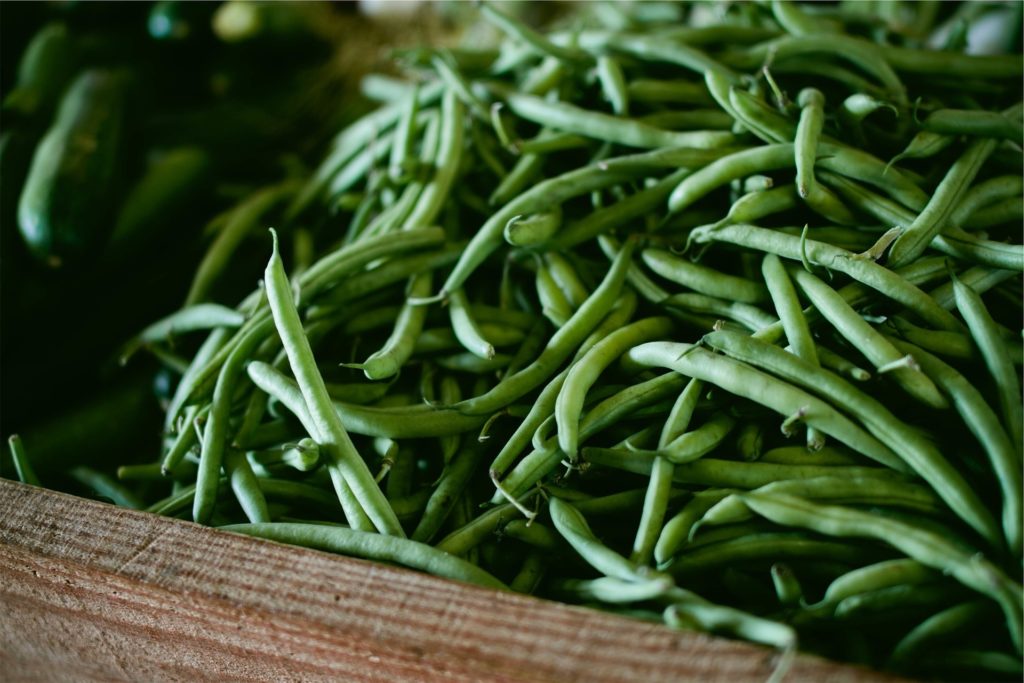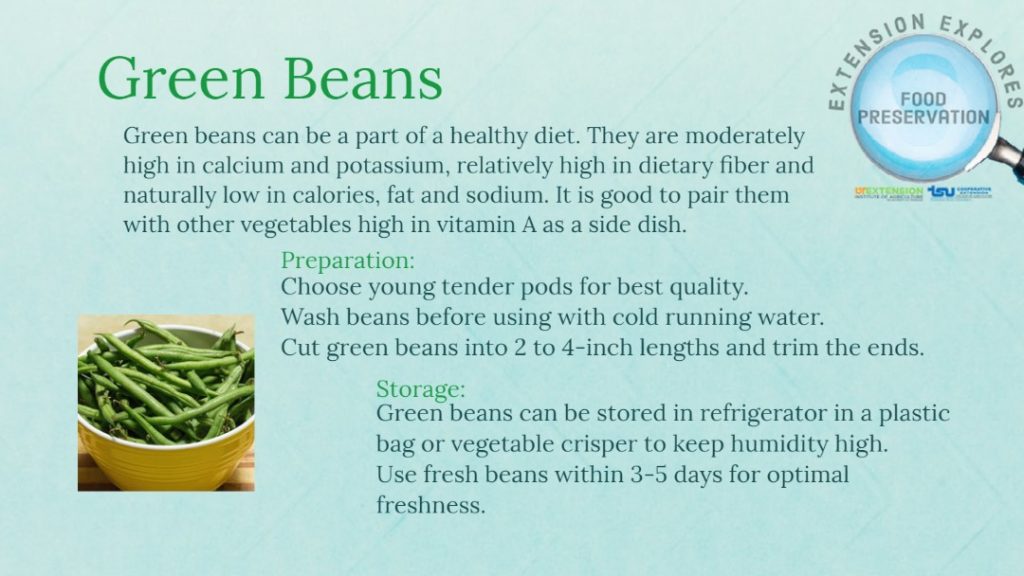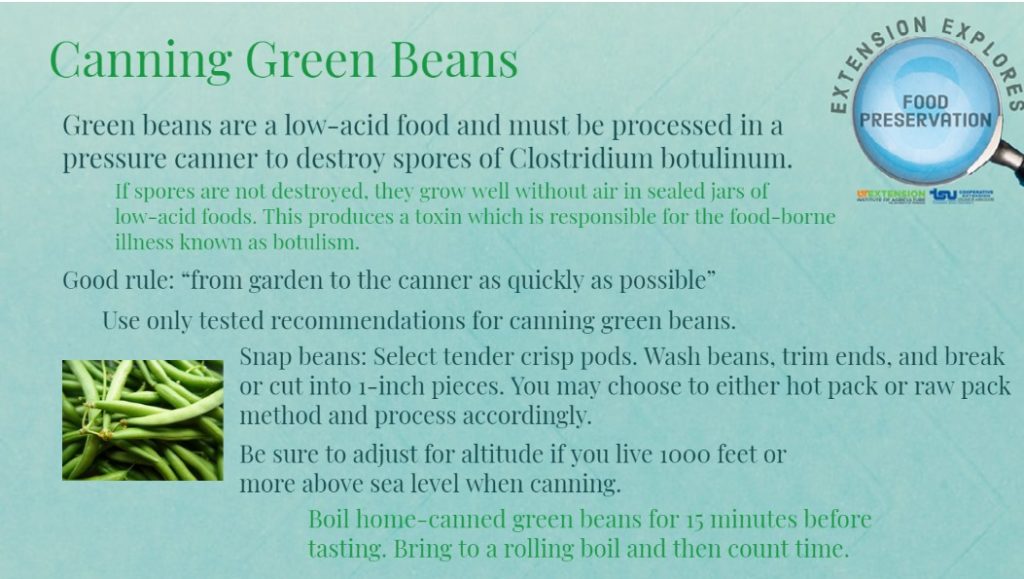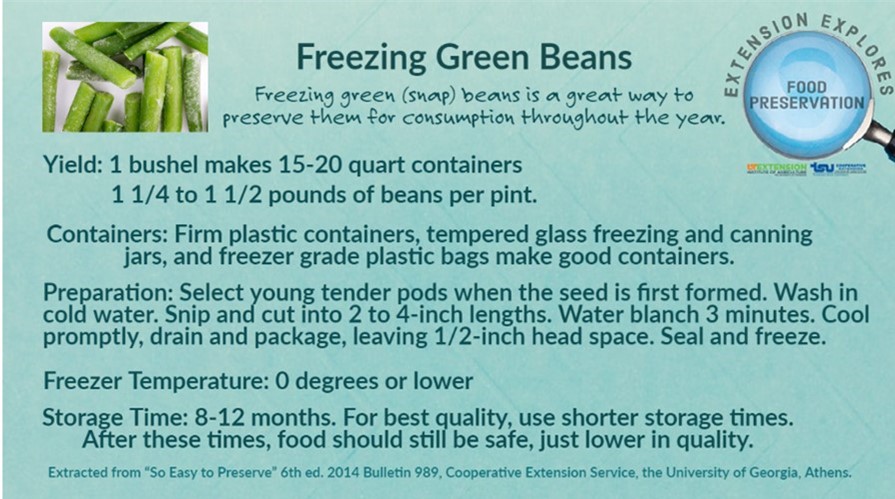
As the summer warms up it is time to can those delicious garden vegetables including green beans. When it comes to green beans you must use a pressure canner.
This canner is used to process food under pressure and is recommended for canning all foods in the low-acid group, including green beans. This group also includes all vegetables (except tomatoes), protein foods (meat, poultry, and fish), mushrooms, soups, and mixed vegetable recipes containing tomatoes. It is very important to process these foods in a pressure canner because of the risk of botulism, a potentially deadly food poisoning. The pressure canner can get the temperature higher than just boiling and therefore kill potentially harmful clostridium botulinum spores.
A pressure canner is a heavy kettle with a lid that locks to prevent the escape of steam and build pressure. It has a safety valve to vent air. The pressure canner must have a rack to separate and keep jars off the bottom of the canner. Follow the manufacturer’s guide for using the canner and a tested recipe for the time and pressure for item preparation.
There are two types of pressure canners. One has a dial pressure gauge, and the other has a weighted gauge to control pressure. Use caution and carefully read the manufacturer’s directions that accompany the canner being used. The types and brands of canners differ somewhat in details of handling. If you have a dial type gauge, check with your local Extension Office to have it tested yearly for accuracy. Use the manufacturer’s recommendation for care of the canner. If a part of the canner needs replacing, check the manufacturer’s guide to find the best place to purchase.
Canning Recipes:
Freezing Recipes:
Videos:
Other Recipes:
- Drying Fruits and Vegetables
- Drying Vegetables (Colorado Extension)
- Leather Britches / Leather Breeches
Resources:
- Snap Beans Produce Page
- UT Extension Canning Book
- UT Extension Freezing Book
- Extension Explores: Safety While Preserving Foods
- Preserving Beans (Kansas Extension)
- Let’s Preserve Snap Beans (PennState Extension)
- How to Preserve Green and Yellow Beans (PennState Extension)
- Preserving Green Beans (Kansas Extension)
- Frequently Asked Questions about Canning Green Beans
- How to Preserve Pole and Bush Beans -Green & Wax (Utah Extension)
- Using a Pressure Canner
- Using Pressure Canners Factsheet (Georgia Extension)
- Pressure Canner Checklist (PennState Extension)
Frequently Asked Questions:



For more information or questions about food preservation, please contact the Family and Consumer Sciences Agent at your local county Extension office. Click here for a list of the Tennessee Extension Offices.
Trade and brand names are used only for information. The University of Tennessee Extension and Tennessee State University Extension do not guarantee nor warrant published standards on any product mentioned; neither does the use of a trade or brand name imply approval of any product to the exclusion of others which may also be suitable.